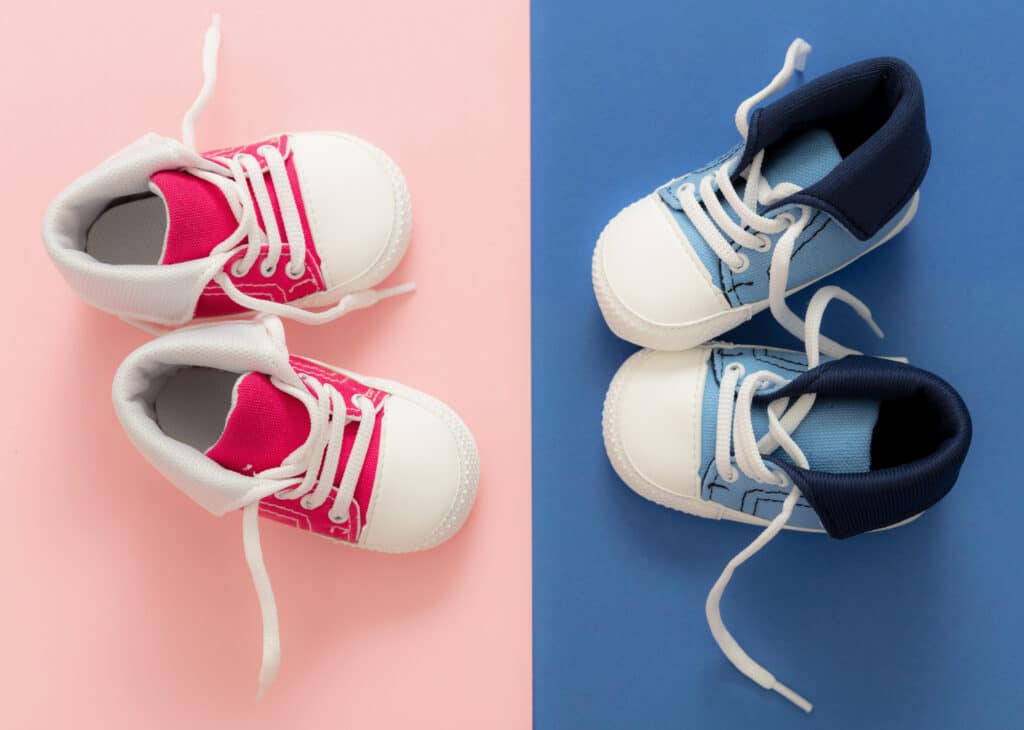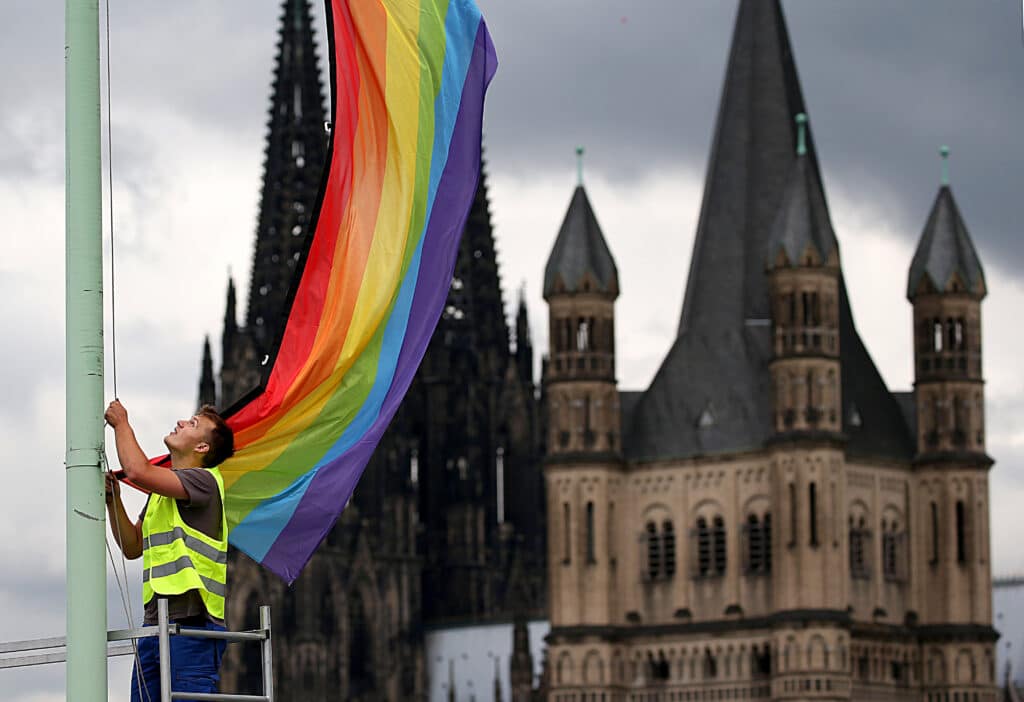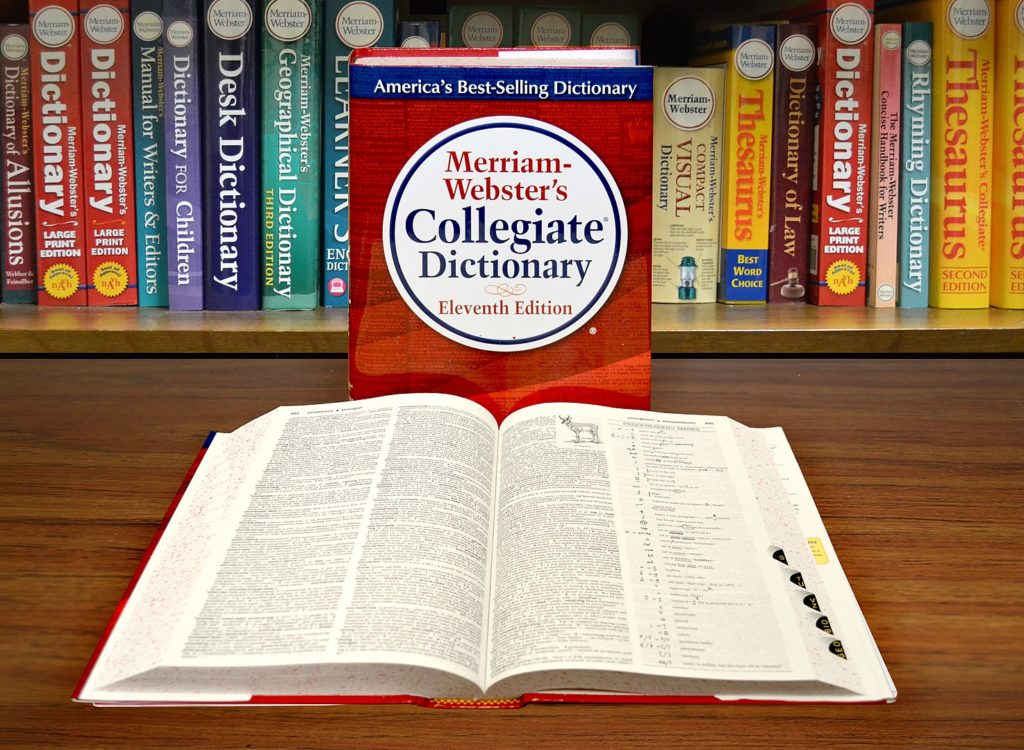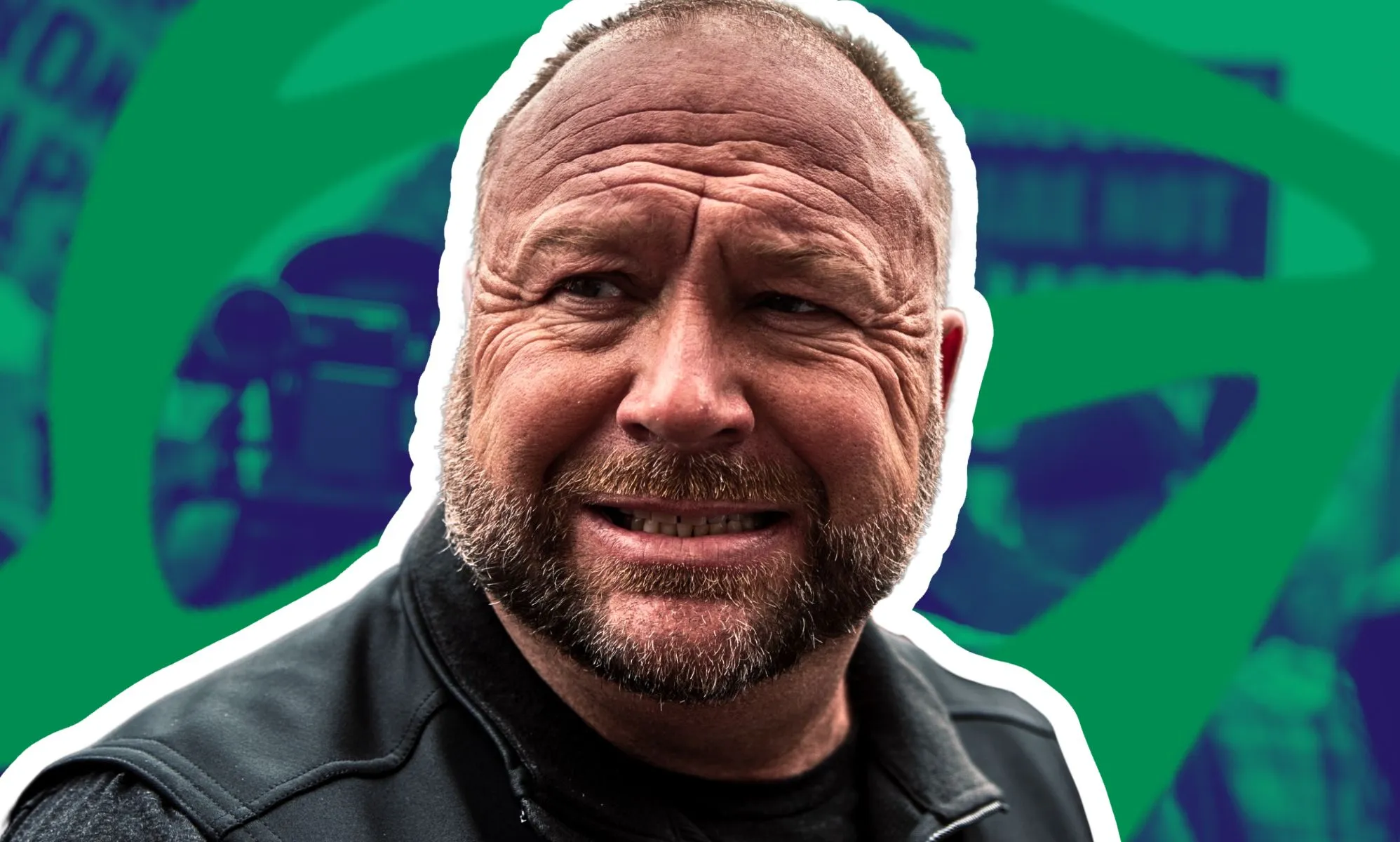9 eye-opening moments in LGBT+ history you probably weren’t taught in school
From Japan to Egypt to China, there’s a lot to queer history that you might not know about. (Getty Images)
It’s LGBT+ History Month – a time to reflect on the kaleidoscopic milestones, people and groups that came before us.
But so much of queer history was erased for an entire generation, in part, because of Section 28, a thorny piece of Tory legislation that banned schools and local authorities for more than a decade from “promoting” LGBT+ topics.
But while LGBT+ history often took place in the nooks and crannies away from the judgmental gaze of mainstream society, so much was also proudly front and centre.
People have long proudly challenged the stuffy gender and sexual norms some pearly-clutching individuals hold as gospel today. Some didn’t even exist until only recently.
From samurai opposing Japan‘s sodomy law to history’s first known pick-up line, here are nine of the strangest queer history facts you definitely weren’t taught in school.
1. Both ‘man’ and ‘girl’ used to be gender-neutral

Before the binary days of pastel blue and pink, the word “girl” was, until the late 15h century, used to mean a child of any gender.
A male child, when they had to be differentiated, would be referred to as “knave girls” or a “maiden child” and female kids were called “gay girls”. A “boy”, on the other hand, was a pejorative term for servants.
And in a crushing blow to fragile men’s masculinity across the globe, the word “man” used to mean any person regardless of gender.
2. The Catholic Church was cool with marriage equality back in the Dark Ages

Well, kind of. Forms of same-sex marriage have existed as far back as the third and 10th centuries, according to ancient church liturgical documents that described the “Office of Same-Sex Unions” and even an order for “Uniting Two Men”.
One variation of this union was called an “adelphopoiesis” that saw St Sergius, a Roman army commander, unite with St Bacchus, his deputy. The Catholic Church later stripped them of sainthood in 1969 and no longer practices the rite.
These ceremonies often included all the things typical of weddings – gathered in a church, a couple blessed at the altar and even a banquet after.
3. The modern use of ‘gay’ has an unlikely origin story

Funnily enough, being gay – or being homosexual – didn’t quite come from the original meaning of “gay”, as in the 12th-century French word for feeling carefree, some etymologists say.
Some 500 years later, “gay” came to mean sexual immorality among straight people – but mainly womanising men. “Gay house” referred to heterosexual brothels in the 19th century and playwright Nicholas Rowe even described The Fair Penitent‘s Lothario – yes, that Lothario – as “gay” because he was a rake.
Historians suggest one of the first times the word was linked to same-sex desire, in particular, may have come from the term “gay cat”, harsh slang used in the 1890s to refer to young drifters trading sex for work and protection from older male wanderers – so-called “real” wayfarers often looked down on them.
It wasn’t until the 1950s that the term came to be used more widely for homosexuality, but queer sex workers in London used the word among themselves since around the late 19th century.
4. The oldest chat-up line was – of course – between two guys

Historians consider one of the oldest chat-up lines in the world to have been between two Egyptian Gods sparring over their father Osiris’ throne. Because nothing gets you in the mood like ruling over a dynasty.
The Tale of Horus and Seth, an Egyptian papyrus, sees deities Horus and Seth arguing for nearly a century over who should be the rightful ruler. Considering a different approach, Seth turns to Horus and says: “How lovely are your buttocks! And how muscular your thighs…”
They then – surprise, surprise – have sex. Use that for your next Grindr date.
5. History’s first known LGBT+ couple shared a tomb together

People have always had the hots for others of the same gender, but one of the first recorded same-sex relationships was in 2,400BC.
Archaeologists dug up two male royal court manicurists named Niankhkhnum and Khnumhotep in Egypt, found buried together in a shared tomb in a similar way to how married couples at the time were. They were nose to nose in a close embrace – no, they weren’t friends, brothers or roommates, historians say.
Instead, they were lovers. Niankhkhum and Khnumhotel’s epigraph reads: “Joined in life and joined in death.” And they say romance is dead.
6. ‘They’ was once the most common pronoun

One for all those weird transphobes who use dusty grammar rules to attack trans and non-binary people. The singular “they/them” used to be the most popular pronoun in the English language, happily used by Jane Austin and William Shakespeare, up until the 19th century.
It was around then that pronouns splintered into the “he/him”, “she/her” division we know today as people wanted English to be more neatly symmetrical like Latin.
But this made English into a bit of an outlier. 254 of the 378 languages tracked by the World Atlas of Language Structures Online don’t specify gender at all with their pronouns.
7. Japanese samurai fought back against the nation’s short-lived sodomy laws

For a decade, from 1872 to 1882, sodomy among men was criminalised in Japan. But samurai, warriors serving wealthy landowners, weren’t too happy about that.
To put it simply, in Japanese Shintoism and Buddhism, homosexuality was never really frowned upon. When the Americans arrived, however, in the 19th century, Japan scrambled to copy the country – in turn, leaders began condemning homosexuality and rolled out a sodomy law.
This statute immediately faced fierce opposition from samurai, among others, who saw nanshoku, or male-on-male sex, as a centuries-old tradition. There was even a manual to it called the Saiseki (Silkworm Hatchling) that covered everything from love to nose hair.
8. Trans people led one of America’s first queer rebellions – and it wasn’t Stonewall

Trans people, especially Black and Hispanic trans women, and drag queens have played many outsized roles during the earliest junctures of America’s LGBT+ rights movement.
While Stonewall has long been a thorny topic of debate on this – with conversations of who threw the vastly symbolic first brick still rumbling – the 1969 uprising in New York was in no way the first.
A decade before, styrofoam coffee cups and stale doughnuts were the symbols of resistance for trans and gender-diverse patrons of Cooper Do-nuts, a 24-hour Los Angeles Café.
In 1959, trans customers clashed with police on what historians say amounted to one of the first LGBT-related riots in the US.
9. The oldest porn was queer and seriously gender non-conforming

Sex! Now we’ve got your attention, let’s talk about porn in LGBT+ history.
The Kangjiashimenji Petroglyphs are ancient rock carvings thought to have been created between 3,000 and 4,000 years ago. They’re the earliest known example of pornography researchers have found.
Between the shapely “female” carvings and the large penis-wielding, “male” carvings are what researchers found was a third group wearing feminine headdresses and had erect phalluses, leading researchers to consider
The carvings were graphic, to say the least. In some illustrations, men embraced other men and others danced around gender non-conforming figures while preparing to have sex with a woman, as you do.






